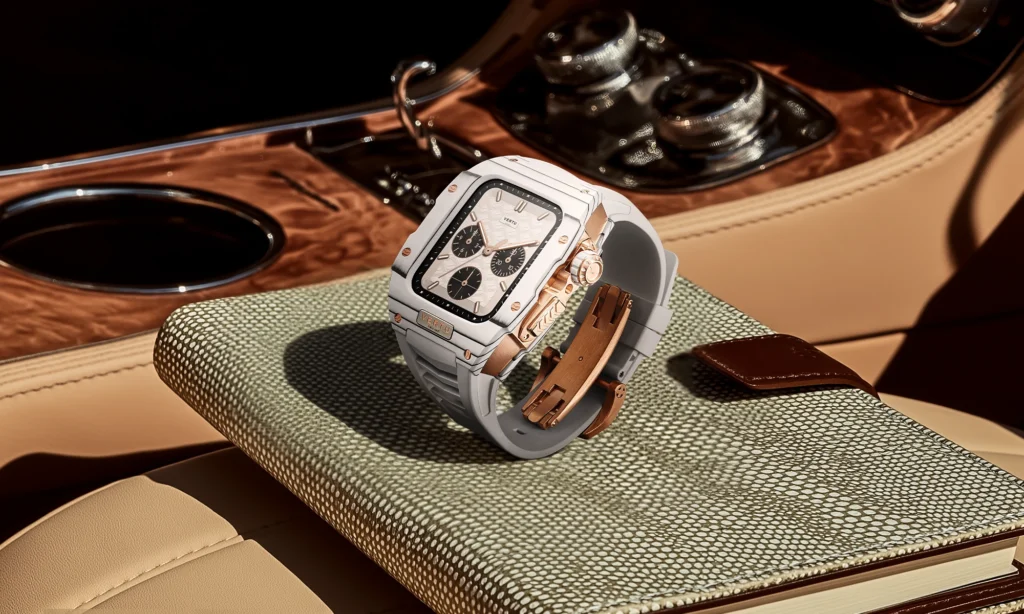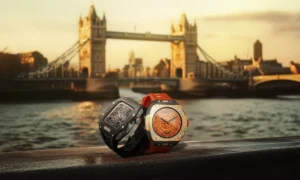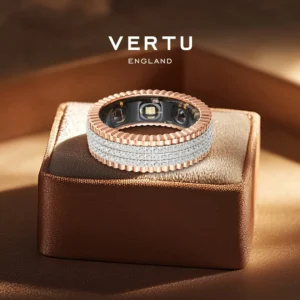

The allure of luxury fashion is timeless, but its future is increasingly intertwined with artificial intelligence. Are you ready to see how AI is revolutionizing haute couture and bespoke experiences?
What You'll Learn:
- The foundational interplay between AI and the luxury fashion industry.
- Practical ways AI is being implemented to enhance design, production, and customer engagement.
- The tangible benefits and measurable outcomes of adopting AI in luxury fashion.
Understanding Luxury Fashion and Technology
The luxury fashion sector has always been synonymous with craftsmanship, exclusivity, and unparalleled quality. However, the digital age, and specifically the rise of artificial intelligence (AI), is ushering in a new era of innovation. This isn't about replacing human artistry; it's about augmenting it and creating entirely new avenues for expression and customer connection.
Luxury Fashion and Technology Fundamentals
At its core, the integration of AI in luxury fashion is about leveraging intelligent systems to optimize processes, personalize experiences, and drive deeper engagement. This involves analyzing vast amounts of data, from market trends and customer preferences to production efficiency and supply chain logistics. AI can help predict what consumers will desire next, enabling brands to stay ahead of the curve. For instance, AI-powered trend forecasting tools are becoming indispensable for designers looking to capture emerging styles. You can learn more about the fundamentals of AI in various industries on platforms like Coursera.
Key Concepts
Several key AI concepts are particularly relevant to the luxury fashion landscape:
- Personalization: AI algorithms can analyze individual customer data to offer tailored product recommendations, customized styling advice, and even bespoke design suggestions. This elevates the shopping experience from transactional to deeply personal.
- Predictive Analytics: By studying historical sales data, social media sentiment, and global trends, AI can forecast demand for specific products, helping brands manage inventory more effectively and reduce waste. This is crucial for the sustainability efforts increasingly demanded by luxury consumers.
- Generative Design: AI can assist designers by generating novel patterns, silhouettes, and material combinations, pushing creative boundaries and accelerating the design process. This empowers designers to explore a wider range of possibilities.
- Supply Chain Optimization: AI can track materials, monitor production, and manage logistics with unprecedented efficiency, ensuring the seamless delivery of high-quality products. The complexities of the luxury supply chain can be significantly streamlined.
- Virtual Try-On & Augmented Reality (AR): While not strictly AI, these technologies are often powered by AI and are transforming how customers interact with products online, offering a more immersive and convenient pre-purchase experience.
Luxury Fashion and Technology Implementation
Integrating AI into a luxury fashion brand requires a strategic approach, focusing on areas that will yield the most significant impact on brand value and customer satisfaction.
Getting Started
Embarking on an AI journey in luxury fashion can seem daunting, but it starts with clearly defined objectives.
1. Identify Pain Points: Where does your brand face challenges? Is it in design iteration, customer service, or inventory management?
2. Data Collection & Analysis: Ensure you have robust systems for collecting customer data, sales figures, and operational metrics. Understanding your data is the first step to unlocking AI's potential. Resources like Statista provide valuable market data.
3. Pilot Projects: Begin with smaller, manageable AI projects. This could involve implementing an AI-powered chatbot for customer service or using AI for personalized email marketing.
4. Choose the Right Tools: Select AI platforms and solutions that align with your brand's specific needs and existing technological infrastructure. Open-source communities and developer resources like GitHub can be invaluable for finding tools and expertise.
Best Practices
To ensure successful AI implementation in luxury fashion, consider these best practices:
- Maintain Brand Authenticity: AI should enhance, not dilute, the brand's unique identity and artisanal values. The human touch remains paramount in luxury.
- Focus on Customer Experience: AI should be used to create more seamless, personalized, and memorable interactions for the customer. This can range from personalized styling advice to efficient after-sales support.
- Ethical Data Usage: Transparency and ethical handling of customer data are critical. Brands must build trust by being upfront about how data is collected and used. For guidance on ethical technology practices, explore resources from organizations like the World Wide Web Consortium (W3C).
- Continuous Learning & Adaptation: The AI landscape is constantly evolving. Brands must invest in ongoing training for their teams and be prepared to adapt their strategies as new technologies emerge. Staying informed through tech news from sites like The Verge is essential.
- Collaboration with Experts: Partnering with AI specialists or technology providers can help navigate the complexities of implementation and ensure optimal results.
Luxury Fashion and Technology Benefits and Results
The adoption of AI in luxury fashion is not just about staying current; it's about unlocking significant advantages that drive growth and brand loyalty.
Expected Outcomes
Brands that strategically implement AI can expect a range of positive outcomes:
- Enhanced Personalization: Delivering hyper-personalized experiences that resonate deeply with individual clients, fostering stronger emotional connections.
- Increased Efficiency: Streamlining design, production, and operational workflows, leading to reduced costs and faster time-to-market.
- Improved Customer Engagement: Creating more interactive and relevant touchpoints that keep customers engaged with the brand.
- Data-Driven Decision Making: Gaining deeper insights into market trends, customer behavior, and operational performance to inform strategic choices.
- Innovation in Design: Empowering designers with new tools and inspiration to create groundbreaking collections.
Success Metrics
Measuring the success of AI initiatives requires tracking specific metrics:
Here’s a comparison of traditional vs. AI-driven approaches in luxury fashion:
| Feature | Traditional Approach | AI-Driven Approach |
|---|---|---|
| Customer Insights | Manual analysis of sales data, focus groups | Real-time analysis of browsing history, social sentiment, purchase patterns |
| Product Design | Designer intuition, trend forecasting | AI-generated design concepts, predictive trend analysis |
| Inventory Mgmt. | Historical sales, seasonal estimates | Predictive demand forecasting, optimized stock levels |
| Customer Service | Human agents, FAQs | AI chatbots, personalized recommendations, proactive support |
| Marketing | Broad campaigns, limited segmentation | Hyper-personalized campaigns, dynamic content delivery |
- Customer Lifetime Value (CLTV): An increase in CLTV indicates that personalized experiences and improved service are fostering greater loyalty.
- Conversion Rates: Higher conversion rates from personalized recommendations or targeted marketing campaigns.
- Operational Costs: Reduction in costs related to waste, overproduction, and inefficient processes.
- Customer Satisfaction Scores (CSAT): Improved scores reflecting better service and more engaging experiences.
- Return on Investment (ROI) of AI Projects: Quantifying the financial benefits derived from AI implementation.
A study by McKinsey & Company highlights that companies adopting AI are seeing significant improvements in profitability and customer satisfaction. The future of luxury fashion is undoubtedly intelligent, and brands that embrace AI will be best positioned for success in 2025 and beyond.
FAQ (Frequently Asked Questions)
Q: Will AI replace human designers in luxury fashion?
A: No, AI is not intended to replace human designers. Instead, it serves as a powerful tool to augment creativity, assist in generating new ideas, and handle repetitive tasks, allowing designers to focus on the core artistic vision and craftsmanship that define luxury.
Q: How can small luxury brands leverage AI without a huge budget?
A: Small luxury brands can start by utilizing accessible AI-powered tools for social media analysis, customer service chatbots, or personalized email marketing. Many platforms offer tiered pricing or free trials, making AI more approachable. Exploring resources like freeCodeCamp can also provide foundational knowledge.
Q: Is AI capable of understanding the nuances of luxury brand heritage and storytelling?
A: While AI can analyze data and identify patterns, it cannot replicate the emotional depth, historical context, and nuanced storytelling that are integral to luxury brand heritage. Human curation and storytelling remain essential to convey these aspects effectively. AI can help in identifying elements that resonate with specific audiences based on data.
Q: What are the biggest challenges in implementing AI in the luxury fashion sector?
A: Key challenges include data privacy concerns, the need for significant investment in technology and talent, integrating AI with existing legacy systems, and ensuring that AI implementation aligns with the brand's exclusivity and artisanal values without diluting them. Understanding best practices in software development, as outlined on sites like dev.to, can be beneficial for implementation.
Conclusion
The fusion of AI and luxury fashion in 2025 promises an era of unprecedented personalization, efficiency, and innovation. By understanding the fundamentals, strategically implementing AI solutions, and focusing on measurable outcomes, luxury brands can not only enhance their existing appeal but also forge deeper connections with their discerning clientele.
Ready to explore how AI can elevate your luxury brand? Start by identifying one key area where AI could make an immediate impact and research relevant tools.







